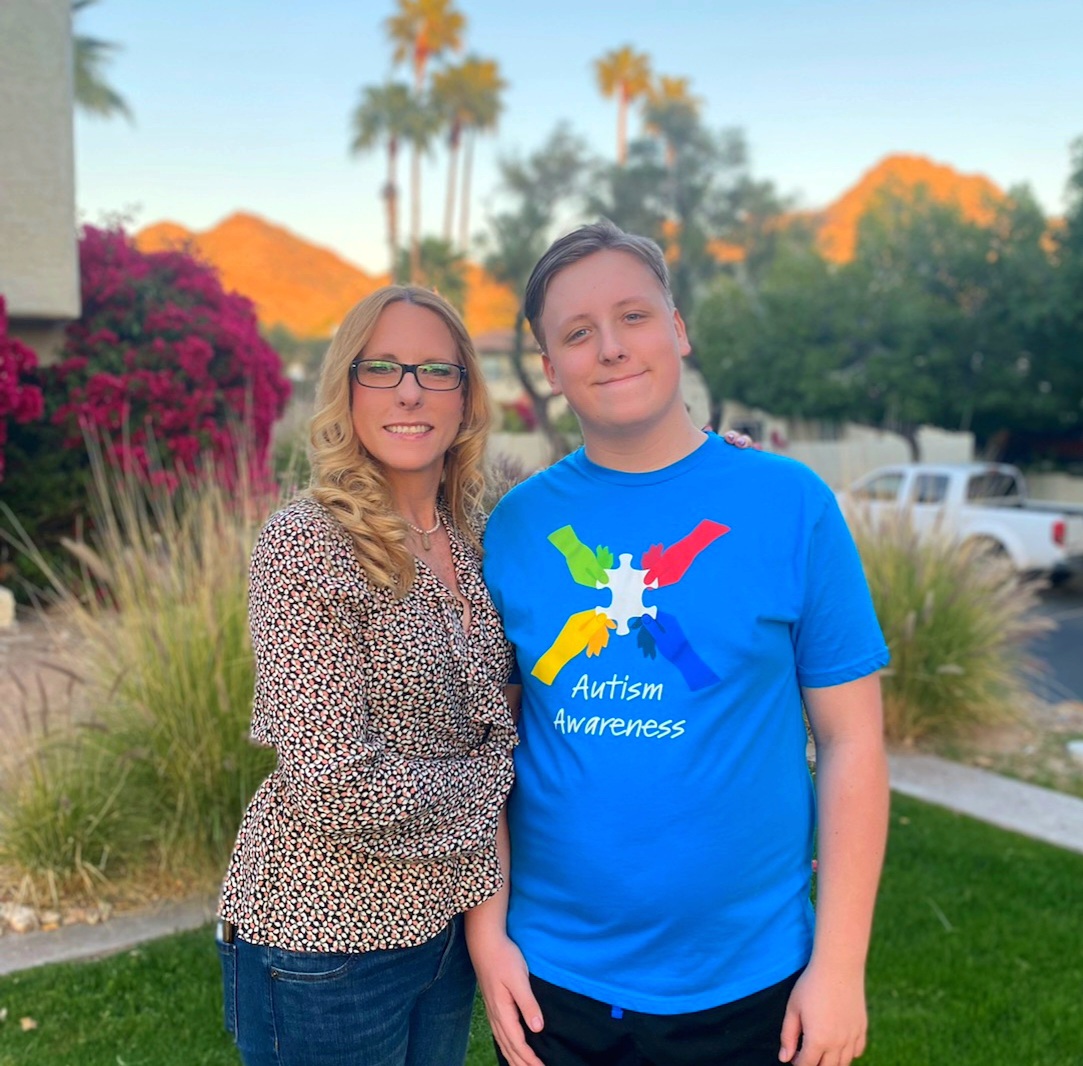From a young age, Christine Peters felt there was something different about her son, Ryan. When Ryan was diagnosed with attention-deficit/hyperactivity disorder (ADHD) at age 2, Christine believed she had a helpful start to understanding Ryan’s behaviors.
She found strategies to best help Ryan. For example, she was a regular volunteer at Ryan’s school, where she helped manage his environment.
But when the family faced various challenges at home, Ryan’s home and school life were upended. And the chaos led to a series of issues over the next few years. Ryan fell behind academically and started to harm himself physically.
Eager to help her son, Christine sought aid from a local behavioral health agency. As part of its services, the agency paired Christine with a family support partner to help her navigate the behavioral health system. A home visit with the support partner yielded an unexpected insight.
The support partner suggested that Ryan may be on the autism spectrum based on her observations of him.
“It all started to make sense,” Christine says. “All these behaviors that he had… there was a reason.”
But Christine needed a formal assessment and diagnosis to be sure that Ryan had autism and to access appropriate services. Then, she found SARRC. By this time, in April 2021, Ryan was 15 years old.
Telehealth Evaluations at SARRC
The diagnostic process at SARRC takes around four hours and involves social interaction between an evaluator and the client. While these sessions are traditionally conducted in person, because of the pandemic, SARRC was offering a telehealth model where evaluators and clients could interact through video conferencing.
“Evaluators use a set of conversational probes and interactive activities,” says SARRC Research Director Nicole Matthews, Ph.D. “These activities are used in an attempt to elicit either behaviors associated with typical development or behaviors associated with autism.”
During the assessment, the evaluator also asks the client’s parents (or another caregiver or family member) about their developmental history and day-to-day functional skills. The behaviors and answers provided are used to determine if diagnostic criteria for autism are met.
“Our goal is to give verbal feedback with a diagnostic determination by the end of the telehealth visit, if possible,” Dr. Matthews notes. “In the rare instances that the outcome of the telehealth evaluation is not conclusive, we ask the client to come into the office for an in-person evaluation so we can observe them during a more traditional social interaction.”
Christine remembers Ryan’s telehealth assessment clearly.
“I heard Ryan telling his story, and I knew instantly that (the interviewer) was going to get Ryan,” Christine says. “I walked away knowing Ryan was going to be just fine.”
At the end of the evaluation, Christine had confirmation that Ryan was indeed on the autism spectrum. A couple of weeks later, SARRC’s formal report arrived.
“When I got the report in my hands and I read it, I knew it was exactly what I needed,” she says. “That truly was when I knew things were going to change.”
Looking to the future
While the nature of the pandemic opened doors to telehealth, it remains unseen whether videoconferencing will be embraced in the future as a means for diagnosis.
“That’s why we’re doing the research that we are doing — so that we can have evidence to demonstrate whether telehealth evaluations are accurate,” Dr. Matthews notes. “The idea, though, isn’t to replace in-person assessments, but to provide more flexibility and increased access.”
The diagnosis they received from SARRC helped Christine find the right school for Ryan. After being out of school for a few years and being on a waitlist, Ryan will start high school this fall at a charter school for students with autism. Christine is also exploring other services that can help Ryan.
Ryan appreciates the insights he’s gained as a result of his diagnosis. He’s optimistic about going back to school and looking forward to a career in gaming — something that has brought him joy through the chaos and hardship.
Christine is eager to see her son thrive.
“He’s been sitting idle, and I’m excited to see what he does,” she says. “My son is so funny, and he’s so smart. And I can’t wait for people to get to know him because he’s amazing.
Signs of Autism in Older Children
For adults and older children like Ryan who have gone undiagnosed, “the signs and symptoms of autism are often more subtle and nuanced,” says SARRC Director of Research Nicole Matthews, Ph.D. Later indicators of autism include:
- Impaired ability to make and keep friends
- Impaired ability to initiate or sustain a conversation
- Challenges interpreting social cues from others
- Absence or impairment of imaginative and social play
- Stereotyped, repetitive or unusual use of language
- Restricted patterns of interest that are abnormal in intensity or focus
- Preoccupation with certain objects or subjects
- Inflexible adherence to specific routines or rituals
Schedule an Appointment
To learn more about telehealth for the diagnosis of autism, visit autismcenter.org/diagnosis or call 602.606.9806.

